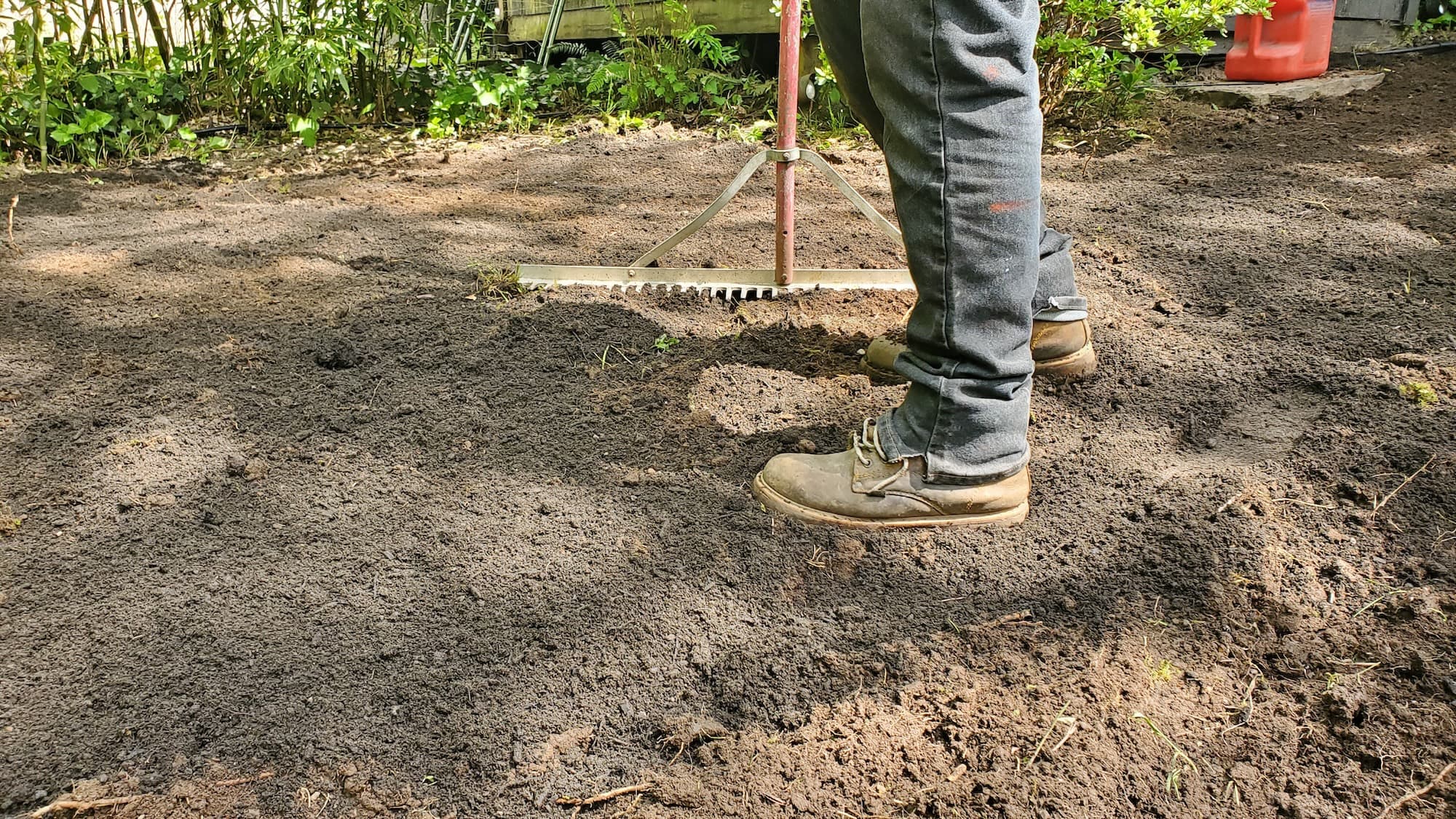West Seattle Gravel Path with Edging
Homeowner’s Issue
West Seattle yards come with a predictable set of headaches: heavy winter rain, compacted glacial till, shady corners that grow moss, and steep short runs from house to street. Many homes near Alki and Lincoln Park sit on slopes or ravine edges where runoff channels down paths, washing away bark, soil, and loose rock. South- and west-facing exposures get drier summers, but the long wet season (October–April) means poor drainage shows fast — rutting, puddles, and plant stress.
Common homeowner complaints: muddy walkways, gravel migrating into planting beds, invasive ivy or blackberry creeping over edges, and paths that become trip hazards. HOAs and curb-appeal standards in neighborhoods like Admiral and Morgan Junction often want tidy, defined edges without chemical weed control. Seattle’s summer water restrictions encourage designs that don’t demand constant irrigation.
A well-built gravel path with solid edging and a permeable base solves most issues: it directs water, stabilizes the walking surface, reduces maintenance, and keeps gravel contained. Our work focuses on fixing the root causes — grading, drainage, and a proper base — so your path stays usable through West Seattle’s wet season and looks clean in the dry months.
Our Quality Service
We install durable gravel paths with clean edging using sustainable methods only — no herbicides. Typical workflow: site walk, grade and drainage correction, compacted crushed-rock base, geotextile fabric, edge installation (wood, metal, or stone), and finish gravel set to grade. Tools: skid-steer or hand tools for access-limited yards, plate compactor, sod-cutter when needed, and hand trowels for fine work.
Timelines: a small 10–30 ft path is usually one day; larger or sloped projects run 1–3 days. We plan work for drier windows in summer and early fall but can do necessary prep in shoulder seasons. We account for rain, slope, and access to ensure safety and lasting results. Benefits: safer walking surfaces, reduced maintenance, improved curb appeal, and better stormwater infiltration.
What’s Included
- Site clean-up: remove debris, cut and wheel away existing turf where required.
- Grade correction: re-contour path to shed water and avoid erosion.
- Base install: compacted crushed rock base for stability and drainage.
- Geotextile fabric: reduces weed intrusion and mixing of soil into gravel.
- Edging: install chosen edging material and secure to line.
- Gravel layer: spread, rake, and compact finish gravel.
- Final cleanup: haul-away or green-bin option for organic debris.
Options / Upgrades:
- Mulch + fabric for adjacent beds.
- Organic, non-chemical weed management (manual removal, mulching, flame weed control on request).
- Drainage swale or French drain tie-in for heavy runoff.
- Decorative gravel choices or contrast borders.
- Haul-away vs. green-bin disposal for yard waste.
Before & After / Expectations
Expect noise (compactor, saws) and some mess for 1–3 days depending on size. We’ll need 3–6 ft of clear access along the path and space to stage materials; for constrained West Seattle alleys or stairs we use smaller equipment and extra labor. Debris handling: we separate green waste from construction waste and offer green-bin haul-away.
After installation the surface is usable immediately, but newly installed adjacent plantings benefit from watering schedules during dry summers. Gravel will settle over the first season; plan a light top-up next year. Weed pressure is heaviest in spring and fall — periodic hand-weeding and a 2–3” mulch buffer keeps edges tidy. In shady spots expect moss; improving grade and light reduces moss over time.
FAQs
Q: How long before I can walk on the new path?
A: Immediately. Compacted surfaces are firm day one; allow a week before heavy loads.Q: Will gravel wash away in heavy rain?
A: Proper grading, a compacted base, and stable edging keep gravel contained even on moderate slopes. For steep runs we add armoring or drainage ties.Q: Do you use herbicides for weeds?
A: No. We use mechanical removal, fabric, mulches, and organic methods only.Q: Can you work on narrow access stairs or steep yards?
A: Yes. We adapt with hand tools and smaller equipment; timelines extend due to extra labor.Q: Any permits needed?
A: Most residential paths don’t need permits; if work impacts public right-of-way or known drainage easements we’ll flag it during the site visit.
Call to Action
West Seattle homeowners: if your path floods, sheds gravel, or just looks sloppy, book a free estimate. We schedule quickly, prioritize durable drainage fixes, and install paths that last through our wet season. Trusted local crews, sustainable methods, sensible pricing.
Email: neatandtidyseattle@gmail.com to get started.










